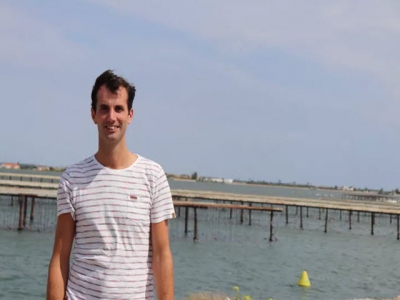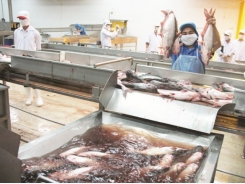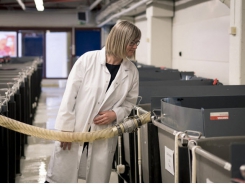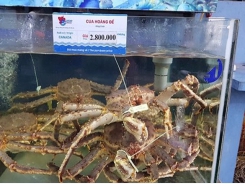Breeding programmes prove their worth

The benefits that salmon farmers obtain by sourcing their stocks from cutting-edge breeding programmes are chronically undervalued, according to a new study.
The results of the project were presented to delegates at Aqua2018 in Montpellier by by Kasper Janssen
The study, ‘Cost-benefit analysis of a breeding program for Atlantic salmon’, estimated the economic impacts of genetic improvement, focusing on traits such as improved growth rates, lower FCRs, better fillet yields and improved resistance to sea lice. Results were obtained by simulation of a breeding programme that was based on the breeding programme used by SalmoBreed prior to 2016.
“The aim is to quantify the benefits that farmers gain from genetic improvement every generation – both by traditional family breeding programmes and by the use of genomic selection – as the economic benefits that producers get from the breeding companies hasn’t been effectively calculated before,” explained Kasper Janssen, from Wageningen University, who presented the research at Aqua2018 in Montpellier last week.
The first part of the study, which calculated the economic impacts of a generation produced by family selection where the emphasis on breeding goal traits is at its economic optimum, found that the combined effect of improving growth and FCR would increase profit by €245 per tonne of salmon produced per generation, and a saving in terms of lice treatments of €8 per tonne of salmon produced, by reducing the average treatments per cycle from 3.7 to 3.6. Overall, according to the study, using a strain produced by family selection led to a small increase in production volumes as well as cost savings, resulting in a profit increase of €275/tonne per generation.
The study forecasts that the annual genetic gain should equate to €50-80 per tonne of salmon produced per year
The second part of the study looked at the economic impact of a generation produced by genomic selection and the results suggest an even higher increase in profit for the producers, with growth rate up an additional 4 percent, FCR down 8 percent more, sea lice resistance up an extra 9 percent and fillet yield up 4 percent – leading to a €291/tonne benefit for the farmer per generation (every 3.7 years).
Moreover, the study forecasts that the annual genetic gain should equate to €50-80 per tonne per year. And, given that each egg leads to an average yield of 3.8 kg, the genetic potential of an egg would thereby increase by €0.20-0.30 per year, despite the sales price of each egg being less than €0.20 and typically increasing by only ~€0.01 per year
Whether the rate of economic improvement per generation will be linear remains to be seen.
As Janssen reflects: “I expect that such results can be sustained over generations, although they become more uncertain towards the future. As long as genetic diversity is maintained by controlling the rate of inbreeding (which all breeding companies should), trait levels will be improved by selection. Their effect on farm profit may however be non-linear, such that future economic gains may change. On the other hand, gains may even increase with improvements in genomic techniques.”
He also adds the caveat that his study was not able to take all variables into account. Despite this, however, he feels that the underlying conclusions of the research are both striking and sound.
“It’s important to note that actual economic gain may have been different from the results of the study because in reality the emphasis on breeding goal traits differs; genetic parameters may be different; and more traits are included in the breeding goal – for example resistance to IPN, PD, AGD. However, the results suggest a significant undervaluation of genetic improvement by salmon producers. Moreover, consumers should also benefit from lower prices caused by the improvements in production efficiencies, while the environmental impact of production will also be reduced,” Janssen concludes.
Related news
Tools

Phối trộn thức ăn chăn nuôi

Pha dung dịch thủy canh

Định mức cho tôm ăn

Phối trộn phân bón NPK

Xác định tỷ lệ tôm sống

Chuyển đổi đơn vị phân bón

Xác định công suất sục khí

Chuyển đổi đơn vị tôm

Tính diện tích nhà kính

Tính thể tích ao




 Vietnam’s seafood exports to ASEAN expected to reach…
Vietnam’s seafood exports to ASEAN expected to reach…  India tops seafood suppliers to Vietnamese market
India tops seafood suppliers to Vietnamese market